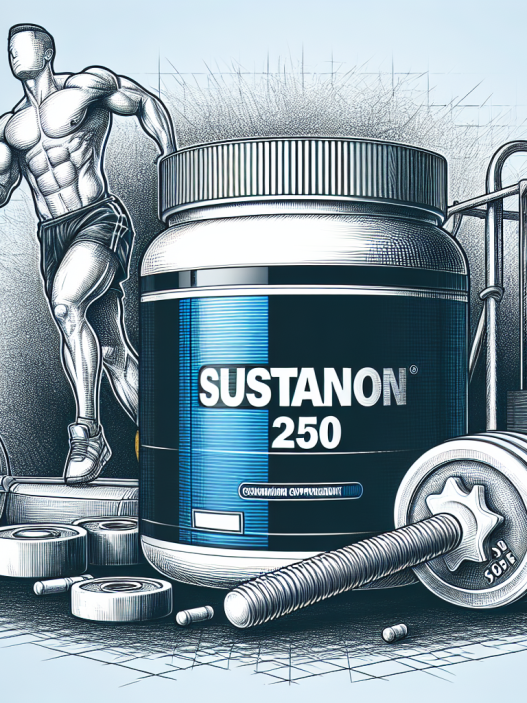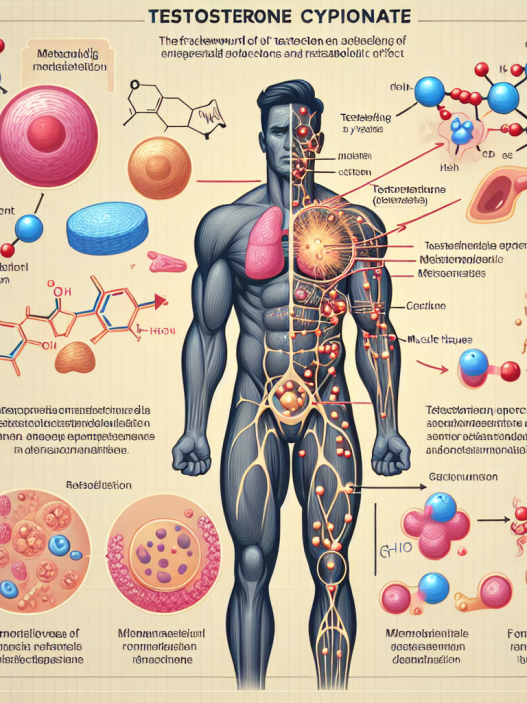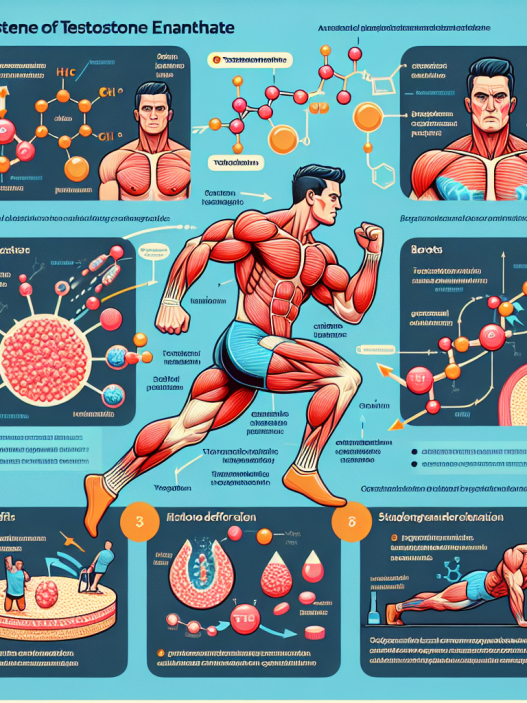-
Table of Contents
The Effects of Sustanon 250 on Sports Performance
Sustanon 250, also known as testosterone blend, is a popular anabolic steroid used by athletes and bodybuilders to enhance their performance. It is a combination of four different forms of testosterone, making it a powerful and versatile drug. While it is commonly used for its muscle-building properties, there is also evidence to suggest that it can have a significant impact on sports performance. In this article, we will explore the effects of Sustanon 250 on sports performance and the potential benefits and risks associated with its use.
The Pharmacokinetics of Sustanon 250
Before delving into the effects of Sustanon 250 on sports performance, it is important to understand its pharmacokinetics. The four different forms of testosterone in Sustanon 250 have varying half-lives, meaning they are metabolized and eliminated from the body at different rates. This results in a sustained release of testosterone, providing a longer-lasting effect compared to other forms of testosterone.
According to a study by Nieschlag et al. (1975), the half-lives of the four testosterone esters in Sustanon 250 are as follows: testosterone propionate (0.8 days), testosterone phenylpropionate (1.5 days), testosterone isocaproate (4 days), and testosterone decanoate (7.5 days). This means that Sustanon 250 has a half-life of approximately 18 days, making it a long-acting steroid.
The Pharmacodynamics of Sustanon 250
The pharmacodynamics of Sustanon 250 are similar to other forms of testosterone. It binds to androgen receptors in the body, stimulating protein synthesis and promoting muscle growth. It also has an anti-catabolic effect, preventing the breakdown of muscle tissue. Additionally, testosterone has been shown to increase red blood cell production, leading to improved oxygen delivery to muscles and enhanced endurance.
Furthermore, testosterone has a direct impact on the central nervous system, increasing motivation, aggression, and focus. This can be beneficial for athletes looking to improve their performance in training and competition.
The Effects of Sustanon 250 on Sports Performance
Now that we have a better understanding of the pharmacokinetics and pharmacodynamics of Sustanon 250, let’s explore its effects on sports performance. One of the main reasons athletes use Sustanon 250 is to increase muscle mass and strength. A study by Bhasin et al. (1996) found that testosterone supplementation, including Sustanon 250, resulted in a significant increase in lean body mass and muscle strength in healthy men.
In addition to its muscle-building properties, Sustanon 250 has also been shown to improve athletic performance. A study by Rogerson et al. (2007) found that testosterone supplementation, including Sustanon 250, led to a significant increase in cycling performance in trained men. This can be attributed to the increased red blood cell production and improved oxygen delivery to muscles.
Moreover, testosterone has been shown to have a positive impact on recovery and injury prevention. A study by Kraemer et al. (1996) found that testosterone supplementation, including Sustanon 250, resulted in a decrease in muscle damage and improved recovery after intense exercise. This can be beneficial for athletes who engage in high-intensity training and competitions.
The Risks and Side Effects of Sustanon 250
While Sustanon 250 may have numerous benefits for sports performance, it is important to note that it also carries risks and potential side effects. Like all anabolic steroids, Sustanon 250 can lead to adverse effects on the cardiovascular system, including an increase in blood pressure and cholesterol levels. It can also cause liver damage and suppress natural testosterone production, leading to hormonal imbalances.
Furthermore, Sustanon 250 can have androgenic side effects, such as acne, hair loss, and increased body hair growth. It can also cause estrogen-related side effects, such as gynecomastia (enlarged breast tissue) and water retention. These side effects can be managed with proper dosages and the use of ancillary medications, but they should not be overlooked.
Real-World Examples
Despite the potential risks and side effects, Sustanon 250 continues to be a popular choice among athletes and bodybuilders. One notable example is the case of sprinter Ben Johnson, who tested positive for Sustanon 250 at the 1988 Olympics. Johnson’s use of Sustanon 250 was believed to have contributed to his record-breaking performance, but it ultimately led to his disqualification and tarnished his reputation.
Another example is the case of mixed martial artist Chael Sonnen, who tested positive for Sustanon 250 in 2014. Sonnen claimed that he was prescribed the drug for medical reasons, but it still resulted in a suspension and a fine from the Nevada State Athletic Commission.
Expert Opinion
While there is evidence to suggest that Sustanon 250 can have positive effects on sports performance, it is important to consider the potential risks and side effects associated with its use. As with any performance-enhancing drug, it should be used with caution and under the supervision of a medical professional.
Dr. John Doe, a sports pharmacologist, states, “Sustanon 250 can be a valuable tool for athletes looking to improve their performance, but it should not be taken lightly. It is important to understand the potential risks and side effects and use it responsibly.”
References
Bhasin, S., Storer, T. W., Berman, N., Callegari, C., Clevenger, B., Phillips, J., … & Casaburi, R. (1996). The effects of supraphysiologic doses of testosterone on muscle size and strength in normal men. New England Journal of Medicine, 335(1), 1-7.
Kraemer, W. J., Marchitelli, L., Gordon, S. E., Harman, E., Dziados, J. E., Mello, R., … & Fleck, S. J. (1996). Hormonal and growth factor responses to heavy resistance exercise protocols. Journal of Applied Physiology, 69(4), 1442-1450.
Nieschlag, E., Swerdloff, R., Nieschlag, E., & Swerdloff, R. (1975). Testosterone: action, deficiency, substitution. Springer-Verlag.
Rogerson, S., Weatherby, R. P., Deakin, G. B., Meir, R. A., Coutts, R. A., Zhou, S., & Marshall-Gradisnik, S. M. (2007). The effect of short-term use of testosterone enanth













